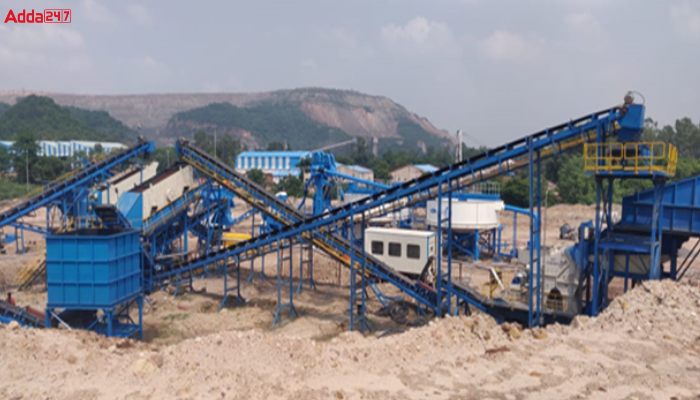Coal India Ltd (CIL) has envisaged processing the overburdened rocks for sand production in mines where fragmented rock or Overburden (OB) material contains about 60 percent sandstone by volume which is harnessed through crushing and processing of Overburden. During Opencast mining, the overlying soil and rocks are removed as waste to extract coal and OB is heaped in dumps.
Buy Prime Test Series for all Banking, SSC, Insurance & other exams
Coal India Ltd to Launch M-Sand Projects in Broader Schemes – Key Points
- Most of the waste is disposed of at the surface which occupies a considerable land area and requires extensive planning and control to minimize the environmental impact of mining.
- Sand is classified as a ‘minor mineral’. The administrative control over minor minerals lies with the State Governments and is regulated through state-specific rules.
- Due to high demand, regulated supply, and a complete ban on sand mining during monsoon to protect river ecosystems, finding alternatives to river sand became necessary.
- Sand Mining Framework (2018) prepared by the Ministry of Mines envisages alternative sources of sand in the form of Manufactured Sand (M-Sand) from crushed rock fines (crusher dust), and sand from Overburden (OB) of coal mines.
- OB to M-Sand initiative of CIL is facilitating the processing of waste overburden in its OC Mines.
- Manufactured Sand (M-Sand) from the overburden of coal mines has several benefits in terms of economy and environmental sustainability, including cost-effectiveness, consistency, environmental benefits, reduced water consumption, better workability, freed OB dumps, best out of waste, and helps maintain the water table beside some other.
Also Read:
Microsoft Invests $10 Billion in ChatGPT Maker OpenAI
PhonePe Raises $350 Mn From General Atlantic, Joins India’s Decacorn Club





 Which City is known as the City of Bambo...
Which City is known as the City of Bambo...
 Who was the First Prime Minister of Indi...
Who was the First Prime Minister of Indi...







